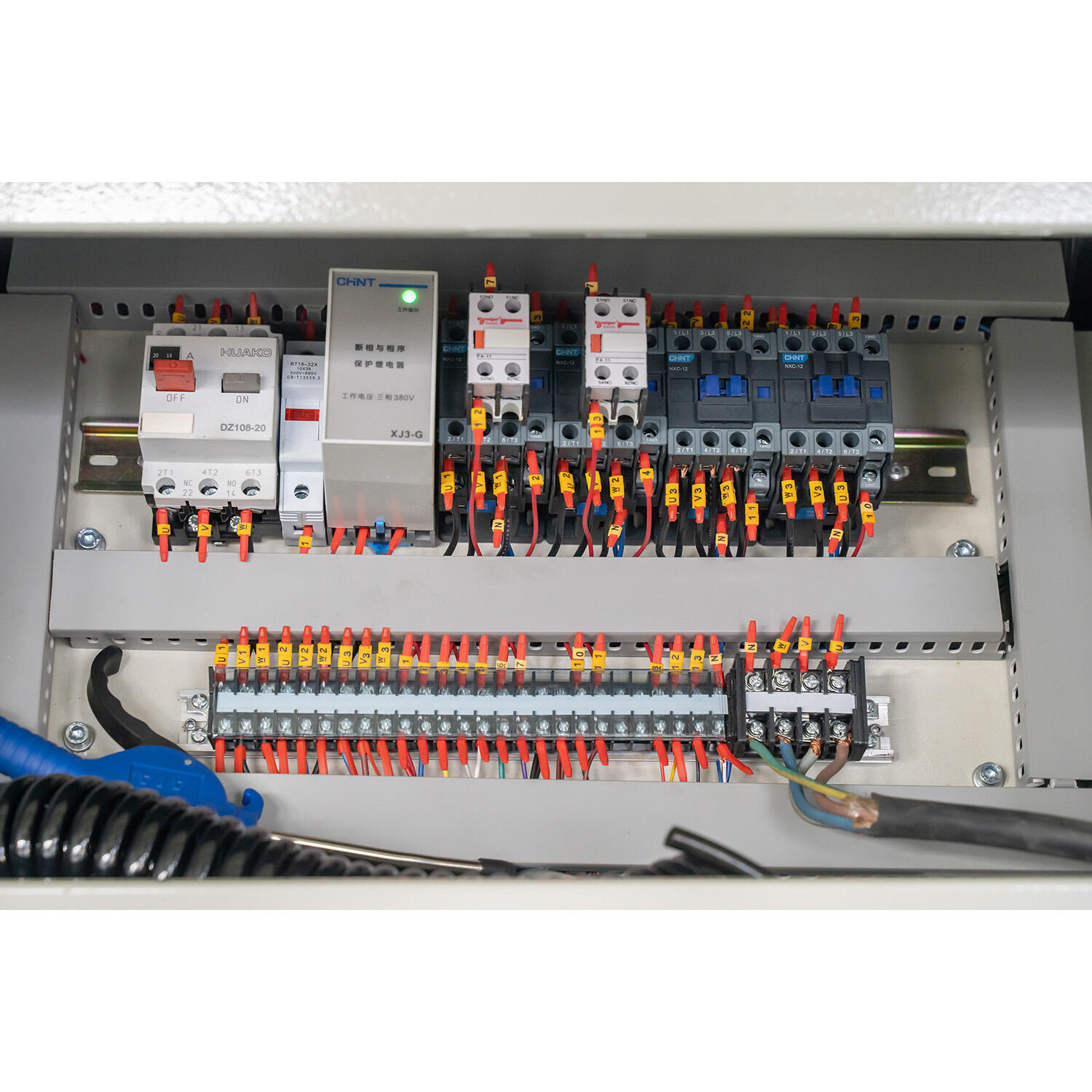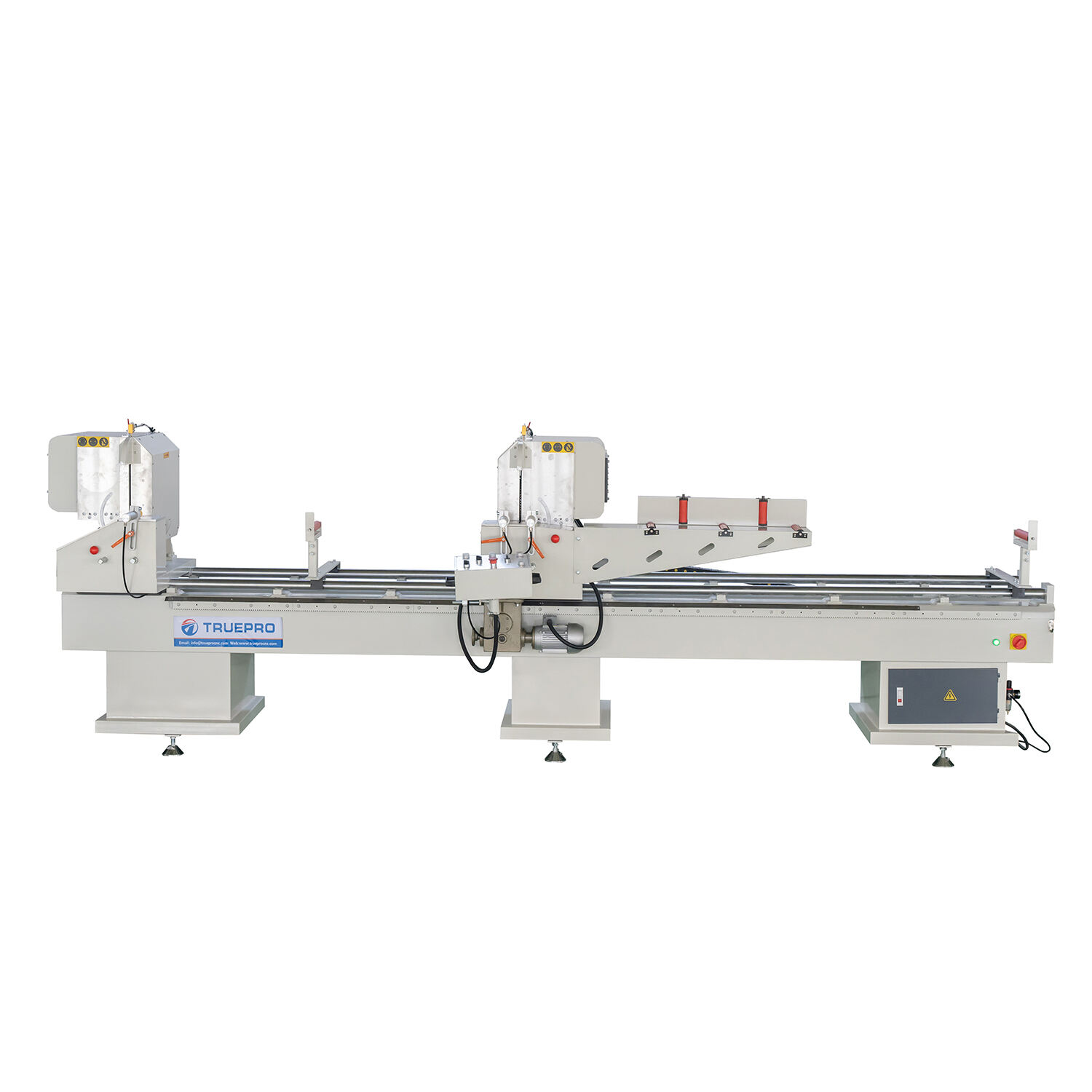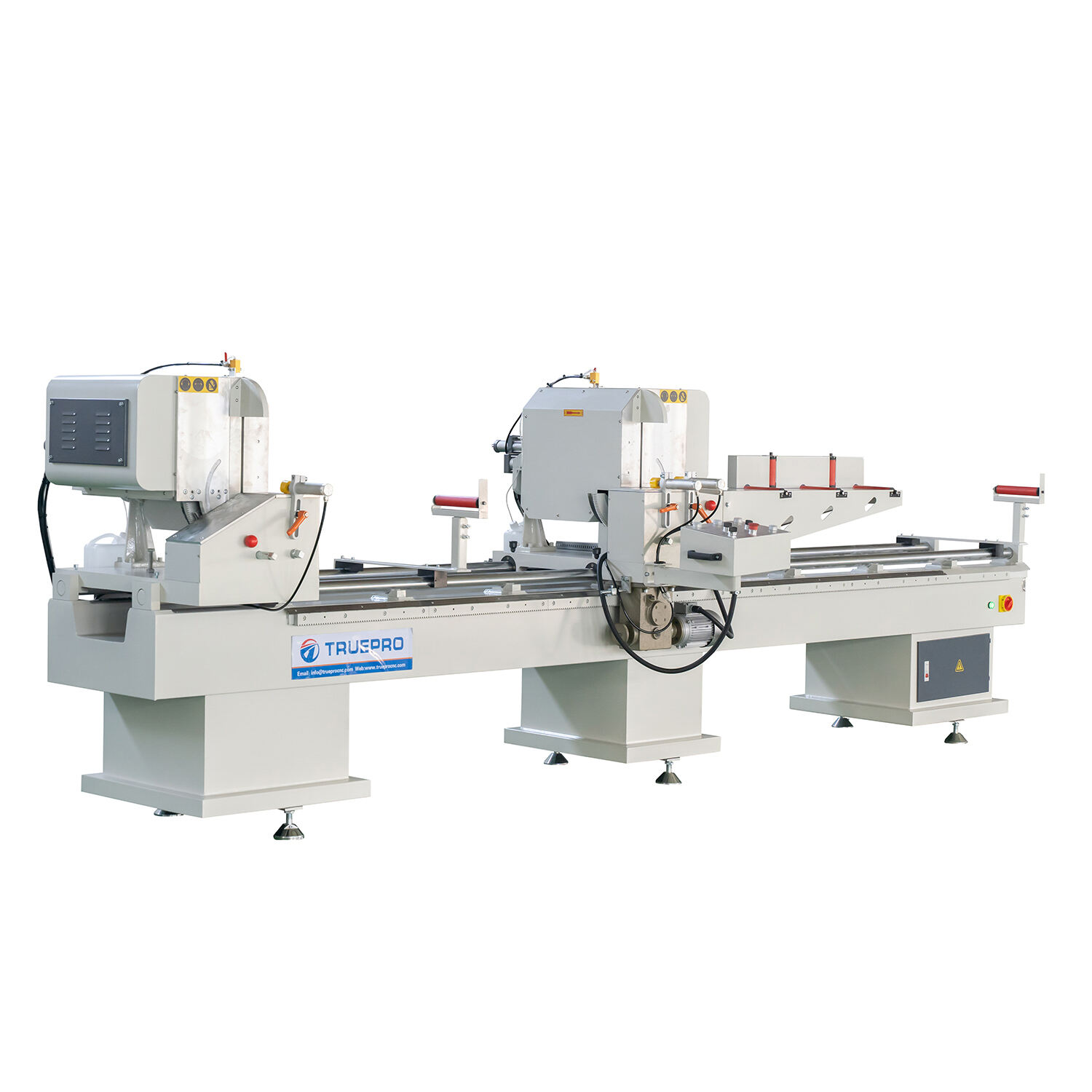The Importance of Precision in Aluminum Profile Cutting Machines
Understanding precision manufacturing in metalworking
Getting those dimensions right matters a lot in precision manufacturing, where we're talking about tolerances as tight as plus or minus 0.005 inches thanks to our fancy measuring equipment. When something goes off track just a bit, it costs time and money to fix later on. Think about structural components for buildings or bridges - if there's even a tenth of a millimeter out of place, that could spell trouble for how much weight they can actually hold. Aluminum profiles are everywhere these days in cars and planes because they're so versatile. But when making them, getting the measurements spot on isn't just about looks either. It really impacts how well everything works together, whether regulations get met for safety standards, and how smoothly parts fit during assembly without causing headaches down the line.
How Aluminum Profile Cutting Machines enhance dimensional accuracy
Today's aluminum profile cutting machines come equipped with laser guides and digital feedback systems that keep angles spot on, usually within half a degree when doing miters or notches. These systems work best when they maintain steady pressure throughout the cut and keep speeds consistent, which helps avoid warping materials and results in surfaces smoother than 1.6 microns roughness average. Getting rid of those annoying little burrs and minimizing heat damage makes all the difference, especially important for those thin wall profiles going into EV battery casings where even minor imperfections can be problematic down the line.
Integration with CNC machining for consistent output
When integrated with CNC systems, cutting machines enable closed-loop quality control, dynamically adjusting parameters based on real-time measurements. This integration results in 99.7% part conformity across production batches. Automated workflows reduce human intervention, cutting geometric errors by 63% compared to semi-automated methods in documented trials.
Case Study: Precision improvements in aerospace component fabrication
A manufacturer of wing spar channels reduced component rejection rates from 12% to 0.8% after implementing computer-controlled cutting machines, meeting the ±0.127mm tolerances required for FAA certification. Servo-controlled feed mechanisms and anti-vibration tooling eliminated manual fitting adjustments, reducing assembly time by 23% during airframe construction.
Automation and Industry 4.0: Advancing Aluminum Profile Processing

The shift from manual to automated cutting systems
Manufacturers are rapidly replacing manual methods with automated aluminum profile cutting machines. CNC-driven systems offer repeatability beyond human capability, achieving 98.5% dimensional precision compared to 70% with manual processes (Manufacturing Technology Insights, 2023). This transition reduces setup times by 60% and lowers accident rates by 45%, prompting widespread reconfiguration of production workflows.
Aluminum profile cutting machines and smart manufacturing in Industry 4.0
These kinds of machines are really at the heart of what we call Industry 4.0 these days. They come loaded with those little IoT sensors and all sorts of ways to share data between different parts of the system. The smart stuff built into them makes it possible to predict when something might break down before it actually happens, which cuts down on unexpected stoppages by around 40%. And there are these central dashboards that show exactly what's going on across the whole production floor right now. Companies have started using AI to figure out better paths for materials moving through the factory, and when production lines work together properly, they waste a lot less material. Some big name manufacturers say they've cut their scrap rates by about 22% just by getting their machines to talk to each other and learn from past experiences.
Real-time monitoring and adaptive control in CNC machines
Spectral analysis sensors keep track of cutting forces and can compensate on their own when tools start wearing down or materials aren't consistent. These systems work fast too, making adjustments within half a second. The closed loop technology changes spindle torque by plus or minus 5 percent and modifies feed rates by around 15 percent as needed during operation. This real time control makes parts much closer to specifications compared to traditional CNC machines without feedback, actually boosting precision by roughly 34%. For thermal management, special modules help keep dimensions stable throughout long production cycles. This matters a lot in aerospace manufacturing where components need to stay within 0.05 millimeters accuracy even after running for 12 hours straight.
Controversy analysis: Human labor vs. full automation in aluminum fabrication
Automation definitely boosts productivity, though many people still worry about what happens to jobs when machines take over. The numbers tell a story: factories using automation typically produce 30 percent more goods while needing 25 percent fewer staff members on hand. But there's another side to this equation. These same facilities actually need around 18 percent more technically trained personnel to handle all the programming work and keep things running smoothly behind the scenes. When companies manage to get humans and robots working together effectively, we see annual improvements in worker productivity of about 2.8%. This suggests that mixing automation with human expertise creates a better situation overall for both business efficiency and maintaining stable employment levels in communities.
Advanced CNC Technology and Tooling Innovations
Evolution of advanced CNC machines in metal fabrication
CNC technology started as simple automation but has grown into advanced multi-axis machines that can handle live tooling and combine both additive and subtractive manufacturing methods. When these systems work with CAM software, they cut down on those pesky translation errors that used to plague aluminum machining operations. The latest models come equipped with high resolution sensors that track position down to the micron level. This kind of precision makes all the difference when working on intricate parts or running complex fabrication jobs where even tiny deviations matter a lot.
Key tooling innovations for precision cutting of aluminum profiles
Diamond-coated carbide tools retain sharpness over extended cycles, minimizing friction and thermal distortion in non-ferrous metals. High-RPM spindles optimized for aluminum alloys allow clean slotting without material adhesion. Toolpath algorithms reduce deflection during intricate cuts, while thermal-stabilized holders maintain consistent clamping force despite temperature fluctuations in continuous operation.
Data Point: 38% increase in throughput with next-gen CNC systems
Deloitte's 2023 manufacturing technology study found a 38% throughput improvement in aluminum profile production when fifth-generation CNC systems replaced conventional equipment. This gain stems from intelligent chip management and adaptive feed controls that sustain optimal cutting conditions. These innovations directly reduce cycle times and enhance overall production efficiency.
Strategies for Maximizing Efficiency and Reducing Waste
Measuring Efficiency Gains in Aluminum Profile Precision Machining Technologies
Sensor-driven monitoring systems help modern cutting machines track cycle times with ±0.15% accuracy and maintain tolerances under 50 microns. Facilities using predictive maintenance tools report 22% less downtime. A 2023 Deloitte study of 37 manufacturers confirmed a 38% throughput increase in shops leveraging these technologies.
Reducing Material Waste Through Advanced Machining Algorithms
AI-powered nesting software optimizes blank placement using 15+ material variables, reducing scrap by 18–27% compared to manual layouts. Adaptive feed rate controls prevent tool deflection, historically responsible for 7–12% material loss, by adjusting parameters mid-operation based on real-time conditions.
Strategy: Optimizing Cut Paths and Minimizing Scrap Rates
Manufacturers can improve efficiency through three key actions:
- Implement real-time kerf compensation to adjust for tool wear (0.2–0.5 mm variance)
- Deploy machine learning platforms that analyze historical scrap data
- Integrate dynamic nesting with ERP inventory systems
One automotive supplier recovered 6.3 metric tons of aluminum monthly using this approach—saving $18,700 per month at 2024 alloy prices.
Key Applications in Automotive and Aerospace Manufacturing

Demand Drivers in Lightweight Vehicle Manufacturing
Electrification is driving demand for aluminum profile cutting machines, with 63% of EV manufacturers now using them for battery tray production (GlobeNewswire 2025). These systems achieve ±0.15mm accuracy in crash management systems and subframes, helping meet safety standards while reducing vehicle weight by 18–22% compared to steel.
Case Study: High-Speed Machining in Aircraft Frame Components
In a recent aerospace project, 5-axis aluminum profile cutting machines reduced wing rib machining time by 34% using adaptive toolpath optimization. Real-time deflection compensation enabled 99.1% first-pass yield on complex spar geometries at 6,000 RPM (ERT Materials Research 2023), meeting AS9100 quality standards for critical aircraft structures.
Common Machining Processes: Mitring, Notching, and Piercing for Aluminum Profiles
Modern systems streamline three essential operations:
- Mitring: Angle cuts from 30° to 90° with automatic springback correction
- Notching: High-speed slot creation via multi-tool auto-change systems
- Piercing: Vibration-damped hole patterns with <0.02mm positional variance
These capabilities allow complete component finishing in a single setup, ideal for aerospace hydraulic manifolds and automotive suspension linkages requiring mixed-profile assemblies.
FAQ
Why is precision important in aluminum profile cutting?
Precision is crucial because it ensures that the components fit well together, meet safety standards, and reduce errors during assembly.
How do cutting machines enhance dimensional accuracy?
These machines use laser guides, digital feedback, and consistent pressure to maintain precise cutting angles and smooth finishes.
What role does CNC machining play in aluminum cutting?
CNC machining integrates with cutting machines for closed-loop quality control, resulting in high part conformity and reduced errors.

